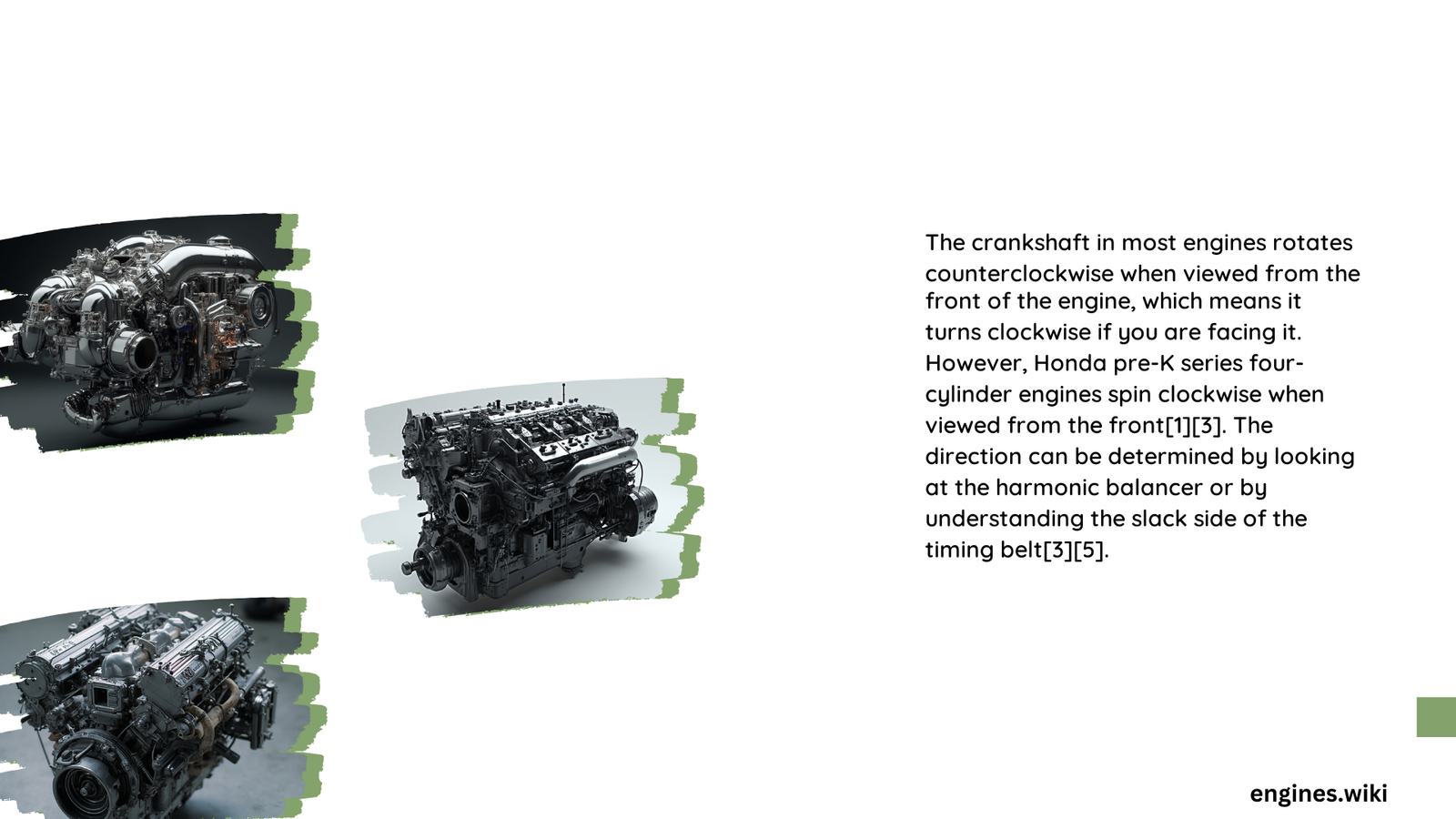Engine crankshafts represent a critical mechanical component that transforms linear piston motion into rotational energy. Most automotive engines rotate their crankshafts clockwise when viewed from the front, with approximately 95% of global vehicle engines following this standard rotation pattern. Understanding crankshaft rotation provides crucial insights into engine design, performance characteristics, and mechanical interactions.
What Determines Crankshaft Rotation Direction?
Why Do Most Engines Rotate Clockwise?
Crankshaft rotation is fundamentally determined by several key engineering considerations:
- Manufacturing Standards: Most automotive manufacturers have standardized clockwise rotation
- Design Compatibility: Transmission and drivetrain components are typically designed around clockwise rotation
- Historical Engineering Precedent: Early internal combustion engines established this convention
How Common Are Different Rotation Directions?
| Rotation Type | Percentage | Notable Examples |
|---|---|---|
| Clockwise | 95-98% | GM V8, Ford Engines, European Manufacturers |
| Counterclockwise | 2-5% | Some Honda Models, Corvair Flat-Six |
Technical Factors Influencing Crankshaft Rotation

What Mechanical Principles Impact Rotation?
Crankshaft rotation involves complex interactions between:
- Piston Movement: Linear reciprocating motion converted to rotational energy
- Camshaft Timing: Synchronization of valve operations
- Combustion Sequence: Firing order and power stroke dynamics
Can Rotation Direction Affect Performance?
Performance implications include:
- Torque Distribution: Slight variations in power transmission
- Chassis Loading: Different stress patterns on engine mounts
- Timing Belt/Chain Tension: Potential variations in belt/chain wear
Unique Rotation Scenarios
Which Manufacturers Deviate from Standard Rotation?
Rare counterclockwise rotation examples include:
- Honda Engines (Pre-2005): Select models with unconventional rotation
- Corvair Flat-Six: Iconic counterclockwise rotating engine
- Custom Performance Engines: Specialized racing or experimental designs
Practical Implications of Crankshaft Rotation
How Does Rotation Impact Maintenance?
Maintenance considerations involve:
- Proper alignment during rebuilds
- Understanding timing belt/chain installation
- Recognizing potential wear patterns
What Tools Help Determine Rotation?
Diagnostic tools for identifying crankshaft rotation:
- Timing mark observation
- Degree wheel measurements
- Manual crankshaft rotation assessment
Advanced Technical Insights
What Mathematical Principles Govern Rotation?
Rotational dynamics involve complex calculations:
- Torque Calculation: ( \text{Torque} = \frac{\text{Power} \times 5252}{\text{RPM}} )
- Rotational Inertia: Moment of rotational mass
- Power Transmission Efficiency
Conclusion
Understanding crankshaft rotation provides critical insights into engine mechanics, revealing the intricate engineering behind automotive power generation.
